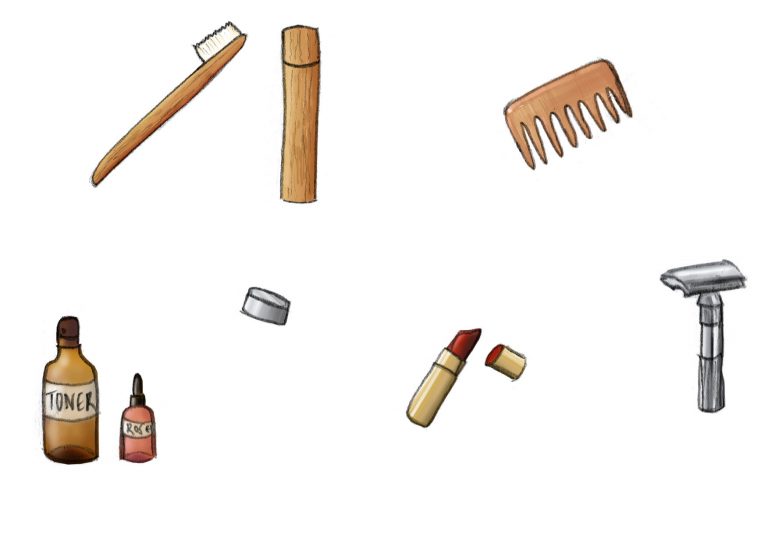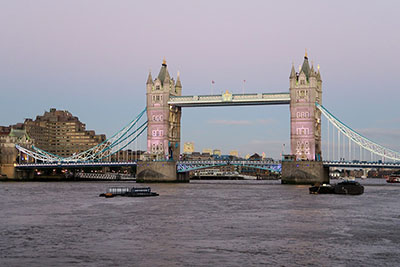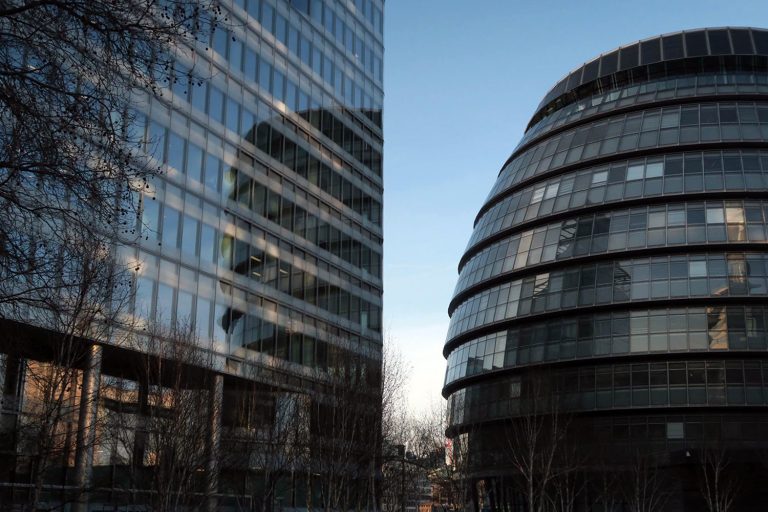What is responsible tourism? Let’s discuss
What is responsible tourism or travel exactly? The whole thing can be a bit confusing and very overwhelming. Let’s break it down and look at where we can start, to make our travels a bit lighter on the planet and those around us.

Green is the new black, especially where travel is concerned.
Responsible tourism is a concept that is here to stay and will only grow in popularity.
Thank goodness for this. The world is a pretty rad place and we should all be doing our bit to take better care of it.
However. At this stage in human existence, when travelling, it does largely feel like a case of ‘last chance to see’.
The positives? This has seen a lot of people embrace measures to travel more responsibly.
That being said, there is a lot of confusion regarding what responsible tourism actually means.
It is after all, an ever-evolving subject and it can be hard to keep up.
I’ve been trying to travel responsibly, sustainably, call it what you will, for a decade now.
It’s a subject I’ve done a lot of research on, both as someone who has worked professionally in tourism, and as a travel writer. Really, this entire blog is an ode to environmentalism and I’m not really mad about this.
So grab a cuppa and let’s take a deep dive into this confusing topic, to come out with a better understanding of what responsible tourism actually is.

What is responsible tourism & how can we embrace it?
Right, we’re gonna dive in and pull this subject apart.
What is responsible tourism? How does it relate to sustainable and ecotourism?
And what can we do to be more responsible travellers?
What about sustainable tourism?
Sustainable tourism is in truth, a bit of an umbrella term.
Long terms goals are to have tourism benefit the land and local communities. And this applies to travellers, operators and tourism boards alike.
In looking at the United Nations’s Sustainable Development Goals (SDGs), you can begin to see a framework for which sustainability can be applied to travel.
Take goal 7 as an example: Affordable and clean energy.
A traveller can at the very least turn lights/air-conditioning off when they leave their accommodation. Or, they can elect to only stay at hotels and hostels that are actively taking measures to limit their energy consumption.
An accommodation provider can install solar panels and promote clean energy practises to their guests, from the concierge when they first walk in, to signage in rooms.
A tourism board can work to employ a state/territory-wide or national program, where accommodation operators are accredited with an ‘eco-tourism’ badge or perhaps star rating, to incentivise them to take these measures.

Why you should perhaps forget about sustainable travel & embrace responsible travel
Over the years the very word ‘sustainable’, has been thrown around so much it has pretty much become a buzzword with no meaning.
Add to that the practise of greenwashing. This occurs when businesses, companies and operators sing out their eco-credentials, without much backing behind them.
The word ‘sustainable’ has been quite a convenient way of doing just this. No one really quite understands what sustainability is, so it can be used as needed and as such, ceases to actually mean anything.
Responsible tourism on the other hand, has a stronger definition and a more universally understood meaning.
Largely, it’s about making places better for people to both live in and visit. Tourism should benefit both the traveller and the community.
And it’s not just travellers that should be held responsible – tour operators, hotels and even governments should have a hand in sustainable tourism initiatives.

What about ecotourism? How does that fit into things?
Ecotourism is probably yet another term you’ve heard bandied around, in relation to sustainable travel.
Truth be told, I think ecotourism has way more legs than sustainable tourism. To me, ecotourism relates to the preservation of the natural environment.
Some ecotourism initiatives may consist of:
- tree planting projects
- wildlife and animal conservation
- beach or river cleanups (by kayak, for example)
- regenerative farming as part of WWOOF-ing.
How exactly do we define responsible tourism?
Responsible tourism is a bit more owned by the individual.
It’s indeed the responsibility both visitors and hosts take, to maintain the longevity of the natural environment and those who inhabit it.
By taking on the mindset of a responsible tourist, you’re conscious of being a visitor in a place. Your actions, therefore, should reflect what’s best for the local communities in the long term, having a positive and considered impact on the world around you.
Basically, you’re travelling responsibly if you’re leaving minimal damage behind.
This is so the sights that you see can be witnessed and appreciated by others, long after you’ve passed on by.

So, how can you travel responsibly?
I’ve personally been examining this very subject for almost a decade now.
This blog was started in order to document better ways of travelling. It’s evolved a bit over the years, as I’ll explain further on in this post.
So let’s have a look at the ways that you alone can do your bit to start travelling in a more responsible manner. I do have a whole separate blog post on this topic, but these are the highlights!
Embrace slow travel
One of the most important things to remember is that travel should never be viewed as a race, to see who can get to the finish line first.
Rather than city or country hopping, give yourself time to get to know a place properly.
Not only will you get to experience it in all it’s glory – you’ll be less likely to burn out along the way.
Responsible tourism is about giving back
Travel with a purpose! Volunteering while travelling remains a popular method of giving back while roaming the world, whether that be caring for animals, conservation, or helping out those in need (although beware of voluntourism and be discerning when it comes to choosing who to work with).
Look for opportunities that support you in some ways – with food or accommodation. Make sure you do your research in pursuing this. While I’m certainly no expert in the field, I remain dubious of organisations that require payment upfront.

Watch the waste & leave no trace
This is one of the most obvious ways you can make an impact as an individual. Here are some ideas to get you started:
- don’t use single use items, such as tissues or plastic cutlery
- carry around your own reusable bag and water bottle
- use toiletries that are kinder to the environment
- think twice about buying stuff you don’t need
- buy food that’s not been wrapped in plastic
- try to compost your food waste as you go.
And beyond. The sky is the limit.
Opt for alternatives to flying
Argh flying. It’s a tricky one.
A few years ago, the term flygskam entered the zeitgeist. A word of Swedish origin, it basically means ‘flying shame’ and can be applied to people who opt to fly short distances, rather than using more sustainable methods such as catching trains, buses or even driving.
I agree that each flight you take should be considered. However, coming from a large country where sometimes flying is the only option (bad infrastructure is to blame here), I don’t think it’s that simple.
Plus, responsible tourism as we’ve previously explored, is less about the individual. Apart from those individuals flying around in their private jets! But really, it should be the industry that pushes for change, not ordinary people taking the brunt of it.

Do your research when it comes to ecotourism & green products
Some brands and companies are embracing green values, because they know it is the right thing to do.
As highlighted earlier, others are cashing in, because it’s the flavour of the moment.
Do your research and keep a strong lookout for bullshit.
I keep a regularly updated list of eco-friendly travel items you can pack for your adventures.
What are some examples of responsible tourism?
So, to dive a little deeper, shall we look to some examples of responsible tourism gone right?

Responsible tourism: what the individual can do
I can really only speak to my own experiences in this space. So, here goes.
Having always had an interest in environmentalism, I started this blog initially to document my attempts to live plastic-free throughout 2016.
At this time, I was living abroad in the United Kingdom as an Australian and travelling quite a lot. So these two interests natural fused into an overall interest in sustainable travel and then responsible tourism.
From this, the most important thing I learned is – don’t try to change everything at once.
Pick one thing that resonates with you and focus on this. For months. Years if needed.
So, my first focus was on plastic-free living. This naturally evolved into an interest in backyard travel, reducing food waste, conservation, permaculture and ultimately, a push back to the wild – including the nature in our own cities.
Pick your thing. Research the heck out of it. Do a whacky experiment. See how you can apply it to your next trip. Don’t beat yourself up when things go wrong (and they will).
Learn. Grow. And share!
For more inspiration, check out these other eco-conscious travel bloggers.

Tourism operator: Wildlife Wonders in Victoria, Australia
Let’s now turn our attention to a operator doing their best to embrace responsible tourism.
Both I and this blog are based in Melbourne, Victoria. So I’m looking to an example not too far from home for this case study.
Wildlife Wonders is located along Victoria’s Great Ocean Road.
This is a wildlife conservation area, which visitors can also tour, to see native Australian wildlife in their natural habitat.
The patch of the Otways has been designed by legendary landscape designer Brian Massey. He’s created an area that resembles a rainforest, with lush fernlife, trees and waterfalls.
All up, there is 30 acres of land, home to bandicoots, koalas, emu, potoroos and more.
Best of all, the area is predator-free. Introduced feral killers such as cats and foxes can’t get in, leaving the inhabitants here to survive and thrive.
Wildlife Wonders is indeed a wonderful example of ecotourism done right. If you live in Victoria or Australia, I implore you to visit.

Tourism board: Slovenia
Okay, full disclosure here. I’ve not been to Slovenia. Yet! However, I have long admired the initiatives of their tourism board from afar.
They are truly leading the charge in responsible tourism, being one of the first countries to pick up the baton and run with it.
One of their great initiatives is the ‘Green accommodation’ label. This is essentially a sustainability badge awarded to hotels taking environmentally responsible measures.
These hotels get hero’ed on the tourism board’s website, further encouraging other providers to strive for the green rating.

Responsible tourism embraced by the people: Costa Rica
And my final responsible tourism shoutout is going to Costa Rica.
I travelled to this gorgeous Central American country in 2016 and was so very impressed by the measures being taken to restore environment, protect threatened species, support local communities and generally take care of their patch of earth.
Costa Rica brought itself back from a deforestation crisis to being a global leader in responsible tourism, with other countries around the world scrambling to catch up.
The difference is that the country puts environmental concerns at the forefront of its political and economical policy. Which makes sense – tourism brings in a lot of dough, so why wouldn’t you want to protect your natural assets for future prosperity?
Some of the measures Costa Rica has taken includes restoring its forest cover to over 52% by 2021. Ecotourism has had a hand in this – indeed, I participated in a tree-planting program when I visited!
It’s a beautiful and unique place, with amazing biodiversity (it contains 6% of the world’s diversity, despite covering 0.3% of the globe!), gorgeous landscape, and a rich culture and heritage. Three million tourists also visit this country a year, so how does this balance out with sustainability and responsible tourism?
In response, Costa Rican people have gone to great lengths to protect their environment. They’ve created national parks, wildlife reserves and conservation projects.
The money made from tourism is invested into local communities, supporting them and reducing poverty. Tourism operators can also apply for the Certificate for Sustainable Tourism.
Developed as far back as 1997, it takes sustainable tourism away from the wishy-washy, making it practical and something to strive for. In turn, this certification tells visitors that they are supporting measures to look after the local environment.
What is responsible tourism? In conclusion
I hope you’ve now got a better understanding of what responsible tourism is and how you can apply it to your travels.
Remember, these are practises that are not just useful for abroad. They’re just as handy when you’re travelling at home, as the local community that is benefitting from responsible tourism is, after all, your own!
Over to you now – what does responsible tourism mean to you? Any measures you’re taking to travel more responsibly?
For more content like this, check out these guides:







All great things to help in little ways, that could add up to big change if everybody chipped in (though that’s probably too much to ask!) Sadly, not flying by plane is probably by far the easiest way to massively reduce your carbon footprint and also to massively reduce the number of destinations available for you to travel to.
It probably is ?
I think it’s hard to do a sustainable travel.
It is hard, but it’s important, too.